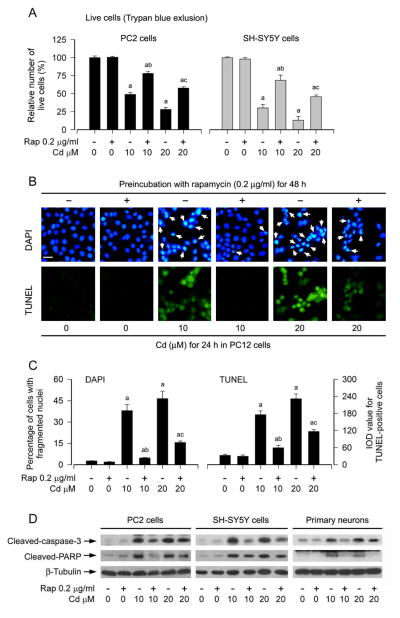Fig. 1.
Rapamycin attenuates Cd-induced apoptotic cell death in neuronal cells. PC12 cells, SH-SY5Y cells and/or primary neurons were pretreated with rapamycin (Rap, 0.2 μg/ml) for 48 h, and then exposed to Cd (10 and 20 μM) for 4 h (for Western blotting) or 24 h (for live cell assay, DAPI and TUNEL staining). A) Live cells were detected by counting viable cells using trypan blue exclusion, showing that rapamycin reversed Cd-induced death of PC12 and SH-SY5Y cells. B) Apoptosis in PC12 cells was evaluated by nuclear fragmentation and condensation (arrows) using DAPI staining (upper panel) and concurrently by in situ detection of fragmented DNA (in green) using TUNEL staining (lower panel). Scale bar: 20 μm. C) The percentages of cells with fragmented nuclei and the number of TUNEL-positive cells were quantified, showing that rapamycin markedly attenuated Cd-induced apoptosis in PC12 cells. D) Indicated cell lysates were subjected to Western blot analysis using antibodies to cleaved-caspase-3 and cleaved-PARP. The blots were probed for β-tubulin as a loading control. Similar results were observed in at least three independent experiments. Results are presented as mean ± SEM (n = 5). a p < 0.05, difference with control group; b p < 0.05, difference with 10 μM Cd group; c p < 0.05, difference with 20 μM Cd group.

